The rebirth of midcentury Brazilian design
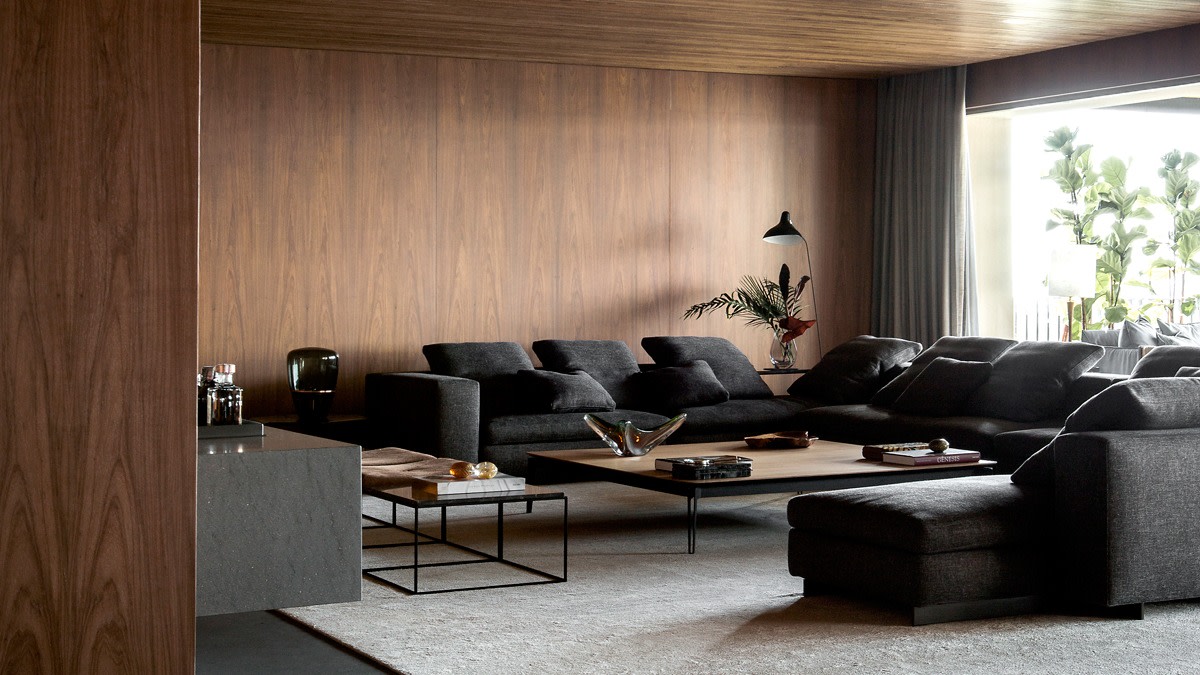
Roula Khalaf, Editor of the FT, selects her favourite stories in this weekly newsletter.
Imagine European modernism after several caipirinhas – tie loosened, shoes kicked off and ready to samba. What you are picturing is the midcentury design of Brazil. Its 20th-century masters created an opulent, tropical alternative to the cool linear stylings of Breuer, Eames, Jacobsen and Le Corbusier, featuring sensuous curves, richly coloured indigenous hardwoods and the luxurious leather and cane used in local craft. Works by Brazil’s midcentury greats, such as Oscar Niemeyer, Sergio Rodrigues, Joaquim Tenreiro and Lina Bo Bardi, have long been pursued by museum curators and specialist collectors. Now, with authorised reissues of the most admired originals and the emergence of a new generation of artist-designers, it’s time for a wider audience to celebrate the audacious design of Brazilian creatives past and present.
Fashion designer Roksanda Ilincic featured furniture by Lina Bo Bardi in her first-ever residential project – an apartment at Gasholders in King’s Cross. “I was always a huge admirer of her work – both of her architecture and her furniture. Her minimal approach, the beauty of natural leather mixed with the simplicity of metal shapes is something that really resonates with my own aesthetic,” says Ilincic. Born in Italy, Bo Bardi arrived in Brazil in 1946, where she became one of her adopted nation’s most celebrated architect-designers. Ilincic grew up in Serbia and established her fashion label in London but fell in love with Brazilian midcentury style when she studied architecture and applied arts at the University of Belgrade. Invited to decorate the interiors at the Gasholders development, she included two leather seats: the 1951 Bola de Latão chair and the Três Pés armchair from 1948, both reissued by Etel, the furniture brand founded by designer Etel Carmona to re-release gems of Brazilian modernist furniture.
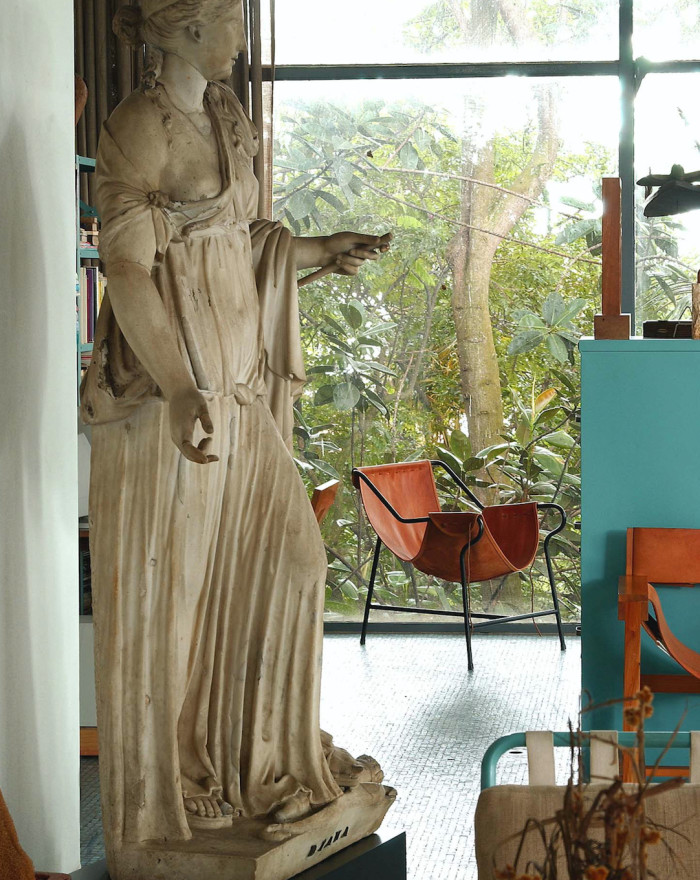
For collectors, the period when the modernist capital Brasilia was being conceived and constructed marks the pinnacle of 20th-century Brazilian design. “The last truly great international moment occurred from 1955 to 1960 with the planning, building and furnishing of the national capital according to the most progressive, utopian, even futuristic thinking of the day,” says Christian Larsen, associate curator of modern and contemporary at the Metropolitan Museum of Art in New York. Original furniture from that time is scarce. “This is due in part to the relative rarity of modernist design in Brazil,” says Larsen. “It was never the predominant trend for decorating homes.”
Hence the latest re-releases – faithful to the originals and made in collaboration with institutes and families of the creators – are finding an avid market. “From a collector’s point of view, the key characteristics I’m looking for in a piece are the relevance, the historical context, the originality and the quality,” says Anna Zaoui, French-Moroccan co-founder of The Invisible Collection, an online curation of collectable furniture and design art pieces. She has launched her selection of Etel reissues of designs by Lina Bo Bardi, José Zanine Caldas, Giuseppe Scapinelli, Jorge Zalszupin, Branco and Preto and Lia Siqueira, and expects that they will particularly appeal to her European clients. “Many of the great Brazilian designers have lived or worked in Europe – the link was already there creatively as well as sentimentally,” she says. “This makes it easy for European interior designers to relate to Brazilian design.” The highlight of the range is the JZ trolley, conceived in 1959 by Jorge Zalszupin, a Polish émigré who moved to Brazil after the second world war, and worked with architect Oscar Niemeyer on furniture for Brasilia. The cart is a cocktail of plain geometry and rich materials – an assemblage of triangles and circles in honey imbuia wood and brass.
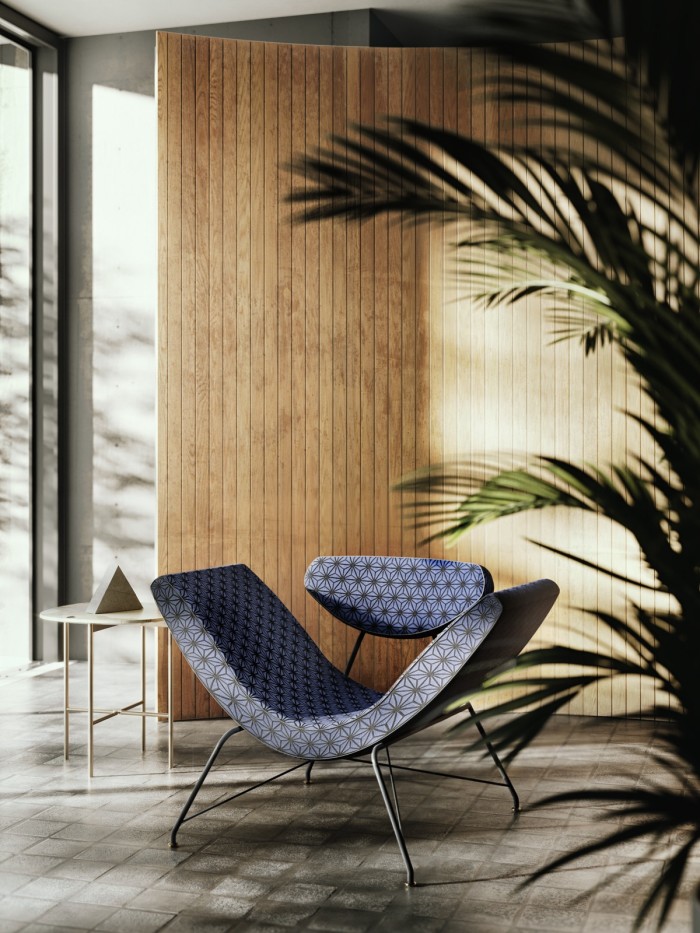
Giusi Tacchini, CEO of Tacchini, who presented a collection of work by Brazilian designers at Milan’s Salone del Mobile this year, also admires the transcontinental aesthetic of the Brazilian greats. “Its midcentury-modern furniture is a symbol of a unique cultural exchange between Europe and Latin America. In other words, it is the fusion of old world and new,” she says. The star of her new collection is the limited-edition Reversível chair designed in 1955 by Martin Eisler, the Viennese architect who left Austria for Argentina in 1938, finally settling in São Paulo. As well as Eisler’s classics, Tacchini’s stable also features contemporary pieces that touch on a key theme of Brazilian design today – namely reuse. Giorgio Bonaguro’s Joaquim marble tables, named after Joaquim Tenreiro, “the father of Brazilian modernism”, are a case in point – they are made from discarded off-cuts of Brazilian marble.
The subject of creative salvaging brings us to Humberto and Fernando Campana, pioneers of Brazil’s contemporary design scene, who have been creating experimental and innovative work from recycled waste since the 1980s. Their multidisciplinary studio in São Paulo has completed design projects of every type, from architecture to jewellery to costume and furniture design for luxury brands such as Louis Vuitton. Humberto Campana says that while the new wave of Brazilian designers are mindful of their modernist history, they are also open to alternative influences. “You know, 30 years ago Brazilian designers were much more focused on Italian and Scandinavian design… now everything has changed and the younger generation is looking to their own backyard for inspiration, while speaking globally,” he says. “It’s a generation that is interested in focusing on our roots and is proud to be Brazilian.”
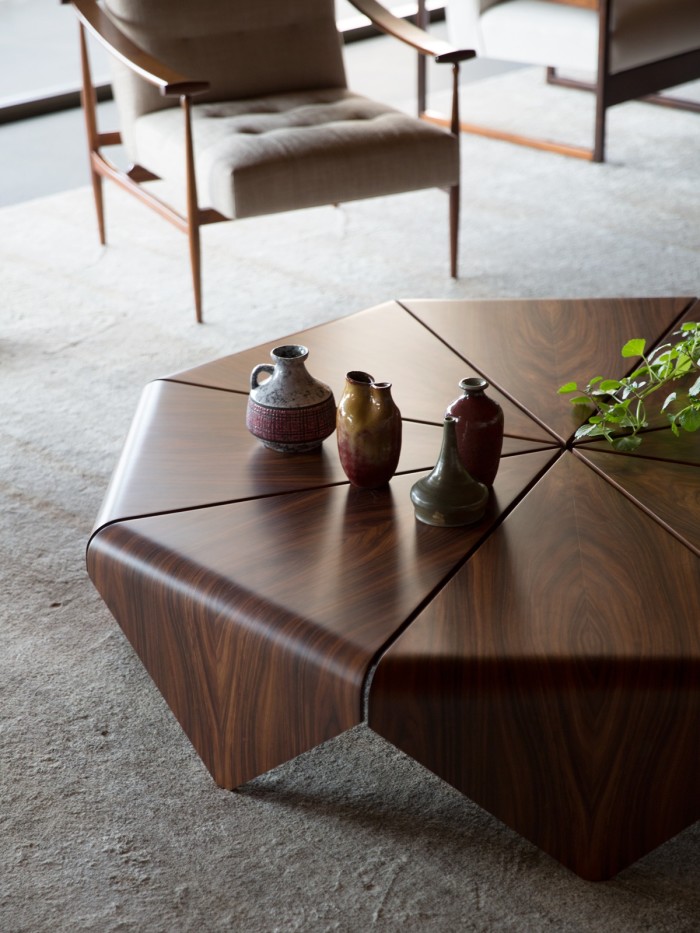
The Campanas currently create art-furniture collections with a team of 20, including designers and artisans, in their studio. “I’m very proud to provide work for people in a country where currently there are almost 12 million unemployed,” Humberto says. “I create jobs working on limited editions, producing them in my studio for Carpenters Workshop Gallery in London, among other partners around the world. I am constantly developing new concepts because the idea is to keep this team working with me.” The Campanas’ Pirarucu armchair (2015), a cast bronze seat upholstered in the skin of the pirarucu, a huge Amazonian fish, was shown by Carpenters Workshop Gallery at PAD London this autumn. Quite the catch for any collector of Brazilian design.
While the Campanas’ furniture – including, memorably, their Teddy Bear Banquete made from dozens of stuffed toys – can be filed under risk-taking design, some of their peers are aiming for a more classic style. Architect, interior- and furniture-designer Patricia Anastassiadis, who lives and works in São Paulo, takes inspiration from her venerable midcentury ancestors while adding her own unique stamp. “Modernism is all about simplicity with precision and I like to work with these two concepts in my projects,” she says. “Oscar Niemeyer believed that a good project was not universal and that it could never be replicated in different locations because each place had its own specific needs. This is something that I also search for.” Hence her new collection includes the Vivika bench for Artefacto, a slender wood and leather seat whose form is drawn from the sinuous shapes of 20th-century Brazilian architecture.

Tactile materials – whether fish skins, soft leather slings or the faux-fur of plush toys – are at the heart of Brazilian design. And no material has more significance to its designers than timber, specifically the rainforest hardwoods such as jacaranda, imbuia, purpleheart and pau marfim. This is elegantly demonstrated in an apartment in São Paulo designed by Marcio Kogan, founder of Studio MK27, which is panelled in sustainably sourced freijó – a chestnut-coloured wood from the Para area of the Amazon rainforest – and a selection of timber furniture by remarkable Brazilian designers of the 20th and 21st centuries. Re-editions of midcentury pieces include the Capri bench and Ipanema chair by Jorge Zalszupin, the Costela armchair by Martin Eisler and the Mucki bench by Sergio Rodrigues. These sit harmoniously alongside pieces by contemporary Brazilian creatives such as Jader Almeida, whose contributions include coffee tables and a dining table and the luxe-industrial Gramp lamp.
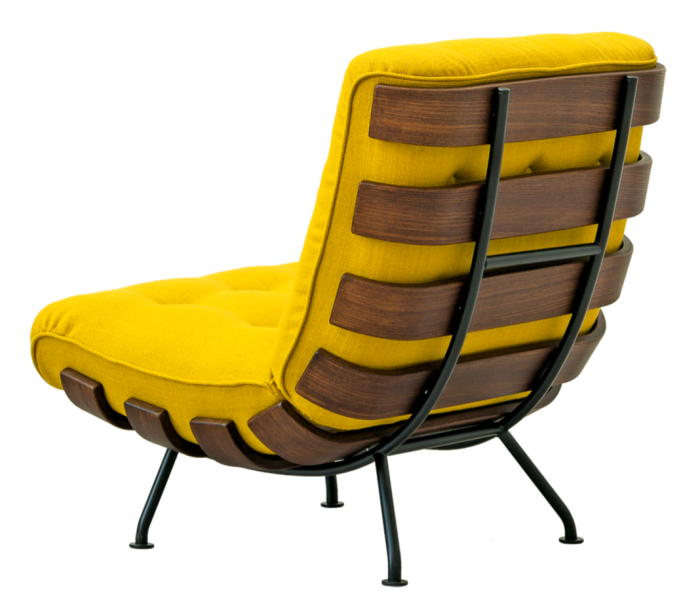
Plenty of playful, inventive designs by contemporary Brazilians eschew the use of precious timbers entirely. Rodrigo Almeida, a friend of the Campana brothers, mixes unexpected materials and found objects – think nylon threads, make-up mirrors and feathers – to form limited-edition artworks, such as his celebrated Concrete chair of 2012. More mainstream furniture pieces from Almeida’s São Paulo studio include a strikingly striped upholstered banquette-sofa for Christian Lacroix Maison (2016) and the woven-rope Trama stool for Nós Furniture (2014). Brunno Jahara, who began his career in Brasilia before setting up Jahara Studio in Rio de Janeiro, calls his aesthetic “Tropical Industrial”. “It’s inspired by the daily life of Brazil and references culture, climate and happiness – all merged into a work produced with factories and artisans to promote and create the best of contemporary Brazilian style,” he says. Jahara’s Paleae Brasilis collection of brass and natural straw trays and lamps, created in collaboration with fellow Brazilian fashion designer Ana Voss, is inspired by indigenous basket-making traditions.
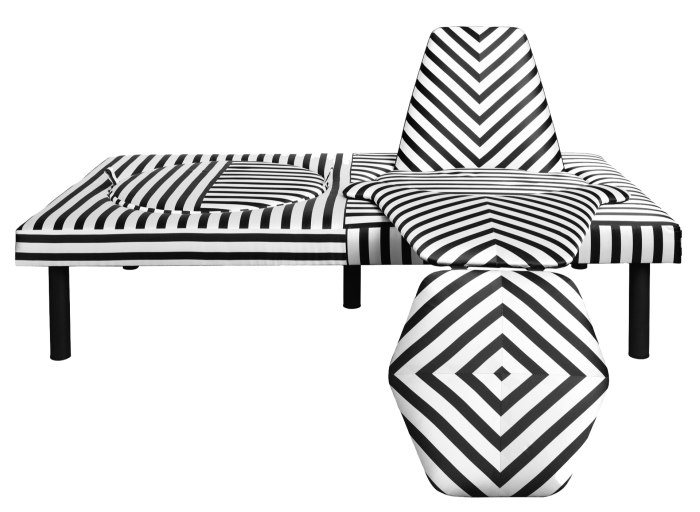
Some of the best-known modernist masters travelled to South America from Europe in the 20th century. Now the tide of talent is turning and Brazilian designers are migrating across the globe. David Elia, an artist-designer born in Rio de Janeiro, is now based in London. His work centres on the theme of gambiarra, “a makeshift problem-solving style common to Brazil, generally necessitated by or alluding to a lack of tools and inspired by a tradition of resourcefulness in poverty,” he says. His Gato Eletrico lamps, featuring exposed wires and wooden boxes, references the illegal wiring used to steal electricity witnessed in Rio’s unregulated favelas. Elia’s Reel coffee table addresses the hot topic of waste, the moulded concrete terracotta tabletop mapping patterns of recycling in Rio.
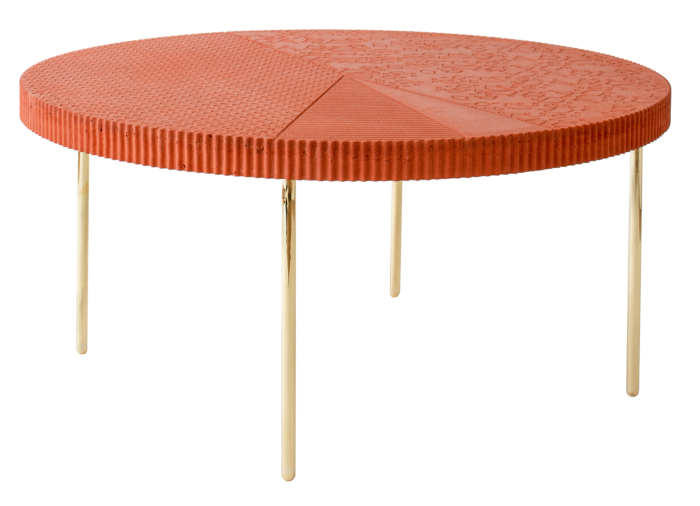
Another Brazilian expat is Filipe Ramos, born in São Paulo and now a New Yorker working for interior designer Andre Mellone, as well as producing his own collection. Like his peers, Ramos is fascinated by midcentury design, as seen in his Microarquitectura bench, while drawing on a wider variety of styles and eras. His new Lagoas table lamp and side tables, along with outdoor furniture for Lovato displayed at the London Design Fair in September, show influences from Bauhaus, Memphis and minimalism.
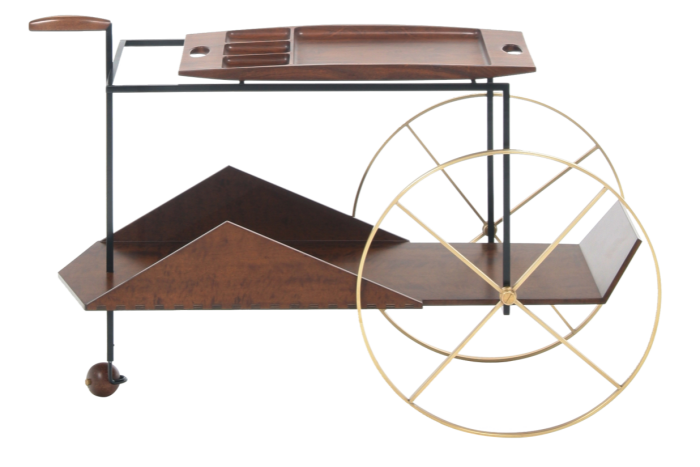
Thanks to the revival of the cream of modernist furniture and a crop of brilliant new creatives, the Brazilian design scene is flourishing, both proud of its past and eager to embrace the future. Next year, at the Museum of Modern Art in Rio, the Campana brothers will stage an exhibition celebrating their work from the past 35 years. “The whole museum is going to be an installation,” says Humberto Campana. “It will show new projects, art pieces, sculptures, collages, jewellery, architecture and costumes. We want to recall our history, because we are storytellers, Fernando and I. We’re very happy to have opened a lot of doors for the younger generation, so it will be exciting to see the response.”
Comments